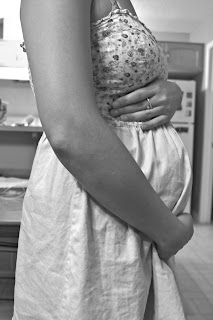Pelvic Floor Muscles and Pregnancy

The muscles of the pelvic floor are pretty amazing. They have many different roles including bladder and bowel control, supporting the pelvic organs, sexual function and core stability. During pregnancy and childbirth, these muscles take on the additional task of supporting the weight of your baby and then allowing the baby to pass through for delivery. These diagrams depict the pelvic floor muscles as they are normally and then during childbirth. Pelvic Floor Muscles at rest Pelvic Floor Muscles when the baby is crowning Remember that this is what your body and these muscles are made to do. However, perineal tearing (tearing of the skin and muscles between the vagina and the anus) is unfortunately quite common and can occur when the muscles are not able to yield appropriately. This can lead to bladder and bowel incontinence and numerous other conditions related to pelvic floor dysfunction. For the muscles to undergo this amount of stretch and decrea...












